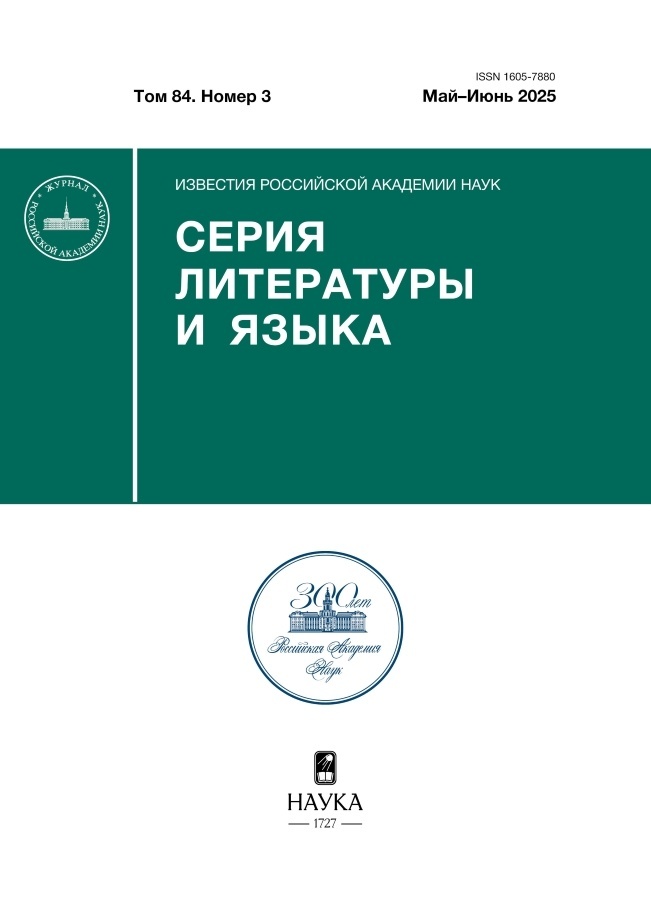The Motive of Childlessness in the Myth of the Ancestors of the Buryats
- Authors: Dampilova L.S.1
-
Affiliations:
- Institute for Mongolian, Buddhist and Tibetan Studies of the Siberian Branch of the Russian Academy of Sciences
- Issue: Vol 83, No 4 (2024)
- Pages: 40-46
- Section: Articles
- URL: https://vietnamjournal.ru/1605-7880/article/view/657009
- DOI: https://doi.org/10.31857/S1605788024040048
- ID: 657009
Cite item
Abstract
On the base of the numerous variants of the myth of the origin of the ancestors of the Buryats, the author analyzes episodes concerning the motive for punishing a childless shaman (two shamanesses), and the rituals associated with receiving a child. The composition of folklore discourse reveals the semantic and semiotic specificity of variable texts. Methods of comparative, semantic-hermeneutic and semiotic analysis to identify the features of the text structure and definition of transformations of text and context at different times and in different ethnic traditions are used. As a result of the study, it was revealed that the original plot outline and characters remain unchanged in the structure of the text: the shaman as a mother, the bull as a father and the children – the first ancestors of the Buryat tribes. The motive of punishment and description of the rite for obtaining a child is present in all versions of the myth, except for the brief Selenga version. In the invariant of the motive of punishment, variants of the motive of exile, mortification, and strangulation are revealed. In different versions of the myth, recoding, transformation and refinement relate to images, motifs and mnemonic symbols. In the composition of the analyzed episodes, the author reveals the transcoding of mnemonic symbols, which are deciphered in the context of traditional stories and legends related to ritual events. From a semiotic point of view, it has been established that sparks from a flame / embers from a fire, a bone and an arrow in this case are the receptacle of the souls of future children.
Keywords
Full Text
About the authors
L. S. Dampilova
Institute for Mongolian, Buddhist and Tibetan Studies of the Siberian Branch of the Russian Academy of Sciences
Author for correspondence.
Email: dampilova_luda@rambler.ru
ORCID iD: 0000-0003-0917-5432
Doct. Sci. (Philol.), Head Researcher
Russian Federation, Ulan-UdeReferences
- Sodnompilova, M.M., Nanzatov, B.Z. Narodnaya ginekologiya mongolskikh narodov: perinatalnyi period, rody i lechenie besplodiya [Folk Gynecology of the Mongolian Peoples: Perinatal Period, Childbirth and Infertility Treatment]. Vestnik Buryatskogo nauchnogo tsentra SO RAN [Bulletin of the Buryat Scientific Center SB RAS]. 2015, No. 2(18), pp. 39–54. (In Russ.)
- Silantiev, I.V. Syuzhetologicheskie issledovaniya [Plotological Research]. Moscow: Yazyki slavyanskoi kultury Publ., 2009. 224 p. (In Russ.)
- Potanin, G.N. Ocherki Severo-Zapadnoi Mongolii. Vyp. IV. Materialy etnograficheskie [Essays on Northwestern Mongolia. Issue IV. Ethnographic Materials]. St. Petersburg: Tip. Kirshbauma Publ., 1883. 1026 p. (In Russ.)
- Baldaev, S.P. Rodoslovnye predaniya i legendy buryat [Ancestral Stories and Legends of the Buryats]. Part I. Ulan-Ude: Buryat. kn. izd-vo Publ., 1970. 364 p. (In Russ.)
- Gungarov, V.Sh. Buryaad domoguud [Buryat Legends]. Ulan-Ude: AO Ulasai tipografi Publ., 2024. 208 p. (In Buryat)
- Galdanova, G.R. Dolamaistskie verovaniya buryat [The Pre-Islamic Beliefs of the Buryats]. Novosibirsk: Nauka Publ., 1987. 116 p. (In Russ.)
- Nebesnaya deva lebed: Buryatskie skazki, predaniya i legendy. Sost., zapis I.E. Tugutova, A.I. Tugutova; per. i predisl. A.I. Tugutova; komment. I.E. Tugutova, A.I. Tugutova, L.N. Nurkaevoi [Heavenly Swan Maiden: Buryat Fairy Tales, Stories and Legends. Compl. by I.E. Tugutov, A.I. Tugutov; Translation and Introduction by A.I. Tugutov; komment. by I.E. Tugutov, A.I. Tugutov, L.N. Nurkaeva]. Irkutsk: Vost.-Sib. kn. izd-vo Publ., 1992. 368 p. (In Russ.)
- Lombotsyrenov, D.-Zh. Istoriya selenginskikh mongolo-buryat [The history of the Selenga Mongol Buryats]. Buryatskie letopisi. Ulan-Ude, Kurumkanskoe knizhnoe izd-vo, 1995, 198 p. (In Russ.)
- PMA, 2018 – Zap. Tsybikovoi B.-Kh.B., Dampilovoi L.S. ot Sebeenei Nordoboi Erdeni, 1950 g.r., khori buryat, g. Khulun-Buir, KNR [The Authorsʼ Field Materials. Notes of Tsybikova, B.-Kh.B., Dampilova, L.S. from Sebeenei Nordoboi Erdeni, born 1950, khori buryat, Khulun-Buir, CPR]. 2018. (In Buryat)
- Galdanova, G.R. Zakamenskie buryaty. Istoriko-etnograficheskie ocherki [The Zakamensk Buryats. Historical and Ethnographic Essays]. Novosibirsk: Nauka Publ., 1992. 173 p. (In Russ.)
- PMA, 2010 – Zap. Nikolaevoi N.N., Dampilovoi L.S. ot Bogomolovoi V. I., 1930 g.r., bulagat, III gotolskii rod; s. Khokhorsk, Bokhanskii raion, Irkutskaya oblast [The Authorsʼ Field Materials. Notes of Nikolaeva, N.N., Dampilova, L.S. from Bogomolova V.I., born 1930, bulagat, Khokhorsk, Bokhanskii district, Irkutskaya region]. 2010. (In Buryat)
- Baldaev S. P. Izbrannoe [Selected Works]. Ulan-Ude: Buryat. kn. izd-vo Publ., 1961. 256 p. (In Russ.)
- PMA 2010 – Zap. L.S. Dampilovoi ot Khamgushkeeva I. Kh., 1936 g.r., bulagat, ongoi, mekhanizator, shaman chernogo kuznechnogo roda, s. Obusa Osinskogo raiona Irkutskoi oblasti [The Authorsʼ Field Materials. Notes of Dampilova, L.S. from Khamgushkeeva I.Kh., born 193, bulagat, ongoi, Obusa village, Osinskii district, Irkutskaya region]. 2010. (In Buryat)
- Banzarov, D. Sobranie sochinenii. Izd. 2-e, dop. [Collection Works. The 2nd Ed.]. Ulan-Ude: Izd-vo BNTs SO RAN Publ., 1997. 239 p. (In Russ.)
- Natsov, G.-D. Materialy po istorii i kulture buryat [Materials on the History and Culture of the Buryats]. Per. so st.- mong. i prim. G. R. Galdanovoi. Ulan-Ude: Izd-vo BNTs SO RAN Publ., 1995, Part 1. 156 p. (In Russ.)
- Obryady v traditsionnoi kulture buryat [Rituals in the Traditional Culture of the Buryats]. D.B. Batoeva, G.R. Galdanova, D.A. Nikolaeva, T.D. Skrynnikova. Moscow: Vost. lit. Publ., 2002. 222 p. (In Russ.)
Supplementary files








